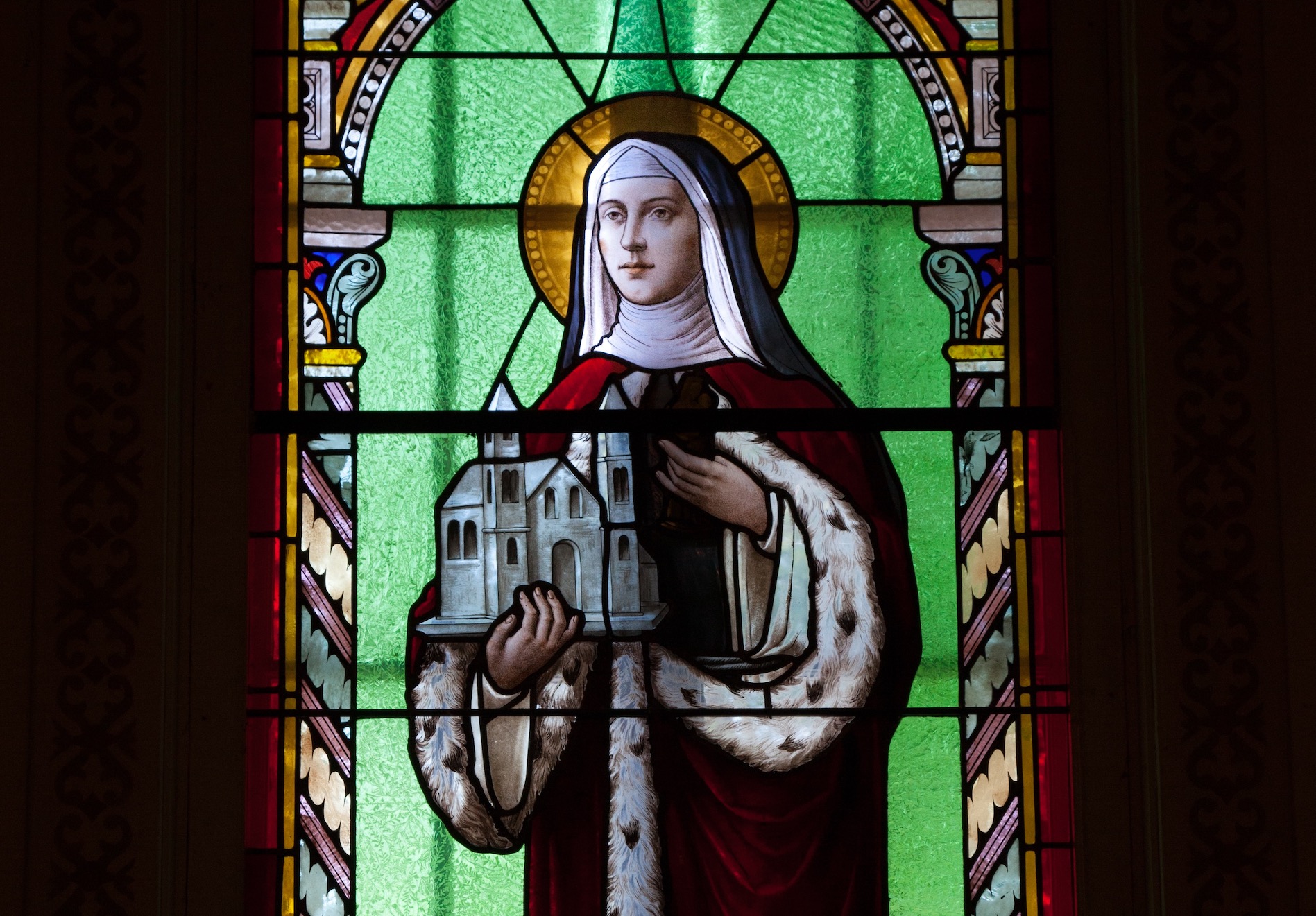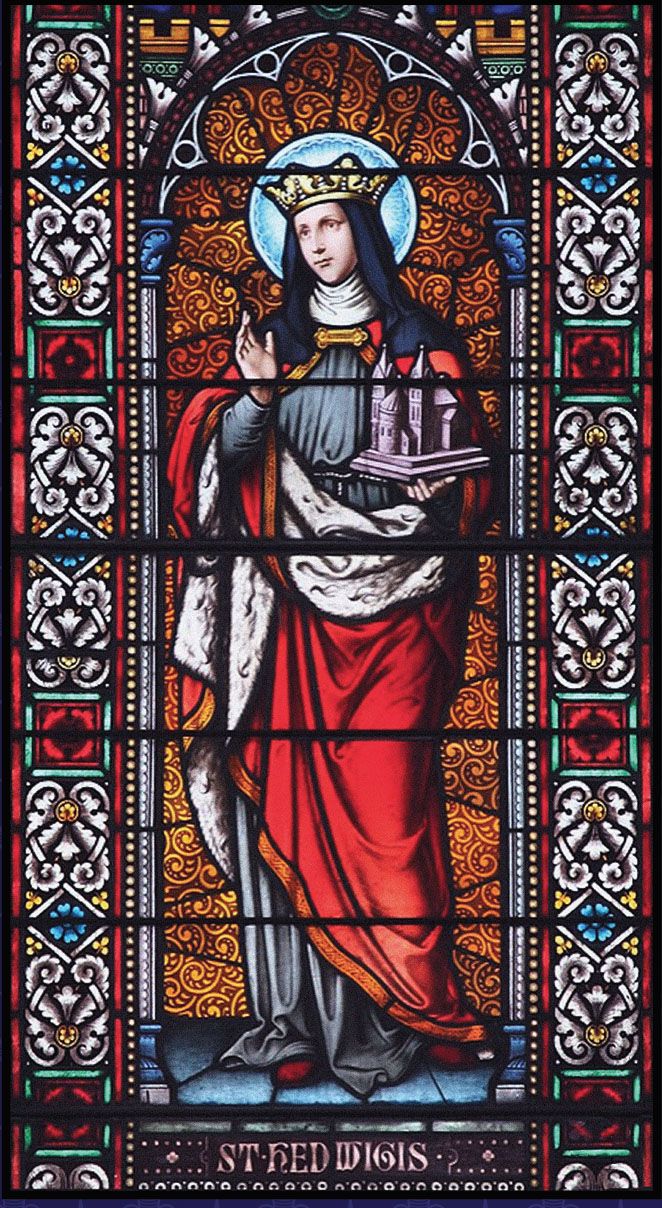Saint Hedwig of Silesia #1

Image Source
Her enormous human effort, aided by divine grace, yielded an example of virtue and made her known as the patron saint of widows, orphans, people experiencing poverty, pilgrims, and those in debt, who constantly received her help and protection.
There is common confusion between Saint Hedwig of Anjou, Queen of Poland, who lived more than a century later and was queen of Poland from 1384 but only canonized in the 20th century.
Our Hedwig was raised in an environment of luxury and wealth, which did not prevent her from an early age from living a virtuous life focused on chastity, humility, and simplicity. She had unusual intelligence for children her age.
Thus, she grew up without letting herself be entangled in the pleasures and entertainments of the court, dedicating herself to reading and prayer. At the age of six, she was entrusted to the Benedictine nuns to educate them in letters, arts, and religion, where she developed numerous talents, especially in embroidery, singing, and mastery of various musical instruments of the time. She also dedicated herself to studying the sacred scriptures, caring for the sick, and cultivating vegetable gardens.
However, being in Church or in front of an image of the Virgin Mary brought the most joy to his soul. Despite her spiritual vocation, Her family raised her for marriage. She promised marriage very early, at just 12 years old, according to the custom of those times. She then joined Henry I, Duke of Silesia, who was 18 years old, with whom she had six children.

statue - Image Source
Henrique had a warrior nature and knew little or almost nothing about spiritual life. Still, he loved the young Hedwig immensely, who was already mature enough to teach him with great affection and patience the mysteries of faith, catechizing her husband and leading him toward the salvation of his soul.
For years, she and her husband dedicated themselves intensely to many activities, mainly building monasteries and hospitals and helping the sick and those most in need. For her, the more illustrious a person was due to his lineage, the more he should be distinguished by virtue. The higher his social position, the more he should edify his fellow men by setting the best example of conduct.

stained glass - Image Source
Hedwig, with her wisdom, was an excellent advisor in the political sphere and had a significant influence on her husband's decisions when governing the kingdom of Silesia, drafting fairer laws for the people, and in the construction of many churches, monasteries, health homes, convents, monasteries and schools where the education of young people based on Christian principles. Girls learned Latin and had access to works by the great doctors of the Church.
In addition to daily communion at Holy Mass, Hedwig dedicated herself to personally caring for the sick in hospitals. She founded a monastery exclusively for the education of poor girls so they could learn trades and have better prospects in life. She participated daily, following all the activities, prayers, meditations, readings, etc.
At this time, the duchess realized that many men ended up in prison because they could not pay their debts. So she started visiting these prisoners, using her own money to pay off their debts, and then offering them jobs so she wouldn't go back into debt and prison. And with this, avoiding the abandonment and destruction of families.
On one occasion, her husband, Henry I, was involved in a war and was taken prisoner by Prince Conrad of Plock. Hedwig then boldly headed into enemy territory and demanded Henry's release. Prince Conrad had a reputation for never being intimidated, but he trembled before Duchess Hedwig on this day. He glimpsed in the Saint the image of an Angel who threatened her and ended up freeing her husband without even demanding a ransom.

stained glass - Image Source
To be continued...
Bibliography; "Santa Edwiges: a Coroa dos Pobres e Protetora dos Endividados" by Padre Jerônimo Gasques.

Follow me on Twitter